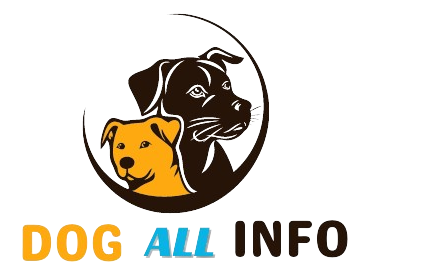Your dog bows to you as a sign of playfulness or submission. It’s a common behavior in canine communication.
Dogs use body language to communicate with humans and other dogs. One such gesture is the bow, often called the “play bow. ” This behavior signals a desire to play and shows that the dog feels safe and happy. Sometimes, dogs bow to show submission or respect, especially towards their owners or dominant dogs.
Understanding this behavior helps strengthen the bond between you and your dog. It’s important to observe the context and accompanying behaviors to accurately interpret your dog’s intentions. Recognizing these cues can improve your interaction and ensure a happy, healthy relationship with your pet.
Canine Communication
Dogs use body language to communicate. A bow is a common signal. This means your dog wants to play. It is called a “play bow.”
Common Signals
Dogs have many ways to show feelings. A wagging tail means they are happy. Ears back might mean they are scared. Growling often means they feel threatened. A relaxed body shows they are calm.
The Bowing Gesture
The bowing gesture is when your dog lowers its front legs and chest. The rear end stays up in the air. This position is called the play bow. Dogs often use it to start playtime. It looks like a stretch but it’s a friendly gesture.
This gesture can happen during playtime. Your dog might do it when excited. It’s a way for dogs to show they are happy. Some dogs bow when greeting you. It’s a sign of respect and love. Your dog is trying to communicate with you.
Play Behavior
Dogs bow to signal playfulness and invite interaction. This playful gesture strengthens bonds and enhances social behavior. Understanding this behavior helps in fostering a positive relationship with your pet.
Invitation To Play
Dogs often bow to invite you to play. This play bow is a clear sign. They lower their front legs and keep their rear end up. This posture says, “Let’s have fun!” Dogs use it with other dogs too. It shows they are happy and friendly.
Playful Postures
Dogs have many playful postures. Wagging tails and bouncing movements are common. They may also spin in circles or jump up and down. These actions show they are excited. Dogs love to play and bond with you.
Submissive Signals
Dogs often bow to show respect. It tells you they see you as the leader. This bow is a friendly gesture. It means your dog trusts you. The dog feels safe around you. Bowing can also be a way to start playtime. The bow shows they are not a threat.
Dogs use a bow to avoid conflict. It signals they do not want to fight. This behavior can calm other dogs. It helps them get along. Bowing shows they are peaceful. It is a way to keep the group happy. The dog stays safe by bowing.
Mimicking Human Actions
Dogs often mimic human actions. Your dog may bow because it sees you bowing. Dogs are very observant. They learn by watching us. If you bow often, your dog might copy you. This is a learned behavior. Dogs want to please us. Mimicking helps them feel connected.
Dogs love getting rewards. If you reward your dog for bowing, it will do it more. Treats and praise make dogs happy. Rewards reinforce good behavior. Your dog learns that bowing gets a positive response. This makes the behavior stick. Soon, bowing becomes a habit.
Health And Comfort
Dogs often bow to stretch their muscles. This is very common after sleeping. Stretching helps them stay flexible and agile. It also feels good to them. Bowing can reduce muscle stiffness. Dogs enjoy stretching just like humans do. They might do it multiple times a day.
Bowing can also relieve discomfort. Dogs might bow to ease any pain. This can be helpful for older dogs. Bowing can help with joint pain. It also helps with back pain. Dogs may bow more if they are feeling sore.
Breed-specific Traits
Some dog breeds are known for bowing. Golden Retrievers and Border Collies often bow. This action is a friendly gesture. It shows they are ready to play.
Genetics play a role in your dog’s behavior. Dogs can inherit traits from their parents. Bowing might be one of these traits. This behavior can be seen in puppies too. It is part of their natural instincts.
Interpreting The Context
Dogs often bow as a way to communicate. They might want to play or show respect. The environment can influence this behavior. A familiar place may make your dog feel safe. New environments might make them cautious. Look at where you are when your dog bows. This can help you understand their intentions better.
Other behaviors can give clues about why your dog bows. Is your dog wagging its tail? This could mean they are happy. If their ears are back, they might feel unsure. Look for these signs to understand your dog’s feelings. Does your dog bark or whine while bowing? They could be trying to get your attention.
Another Post: Why Do Dogs Tuck Their Tails
FAQ
Why Does My Dog Bow To Me?
Dogs bow to show playfulness and affection. It’s a common gesture to invite interaction and fun.
Is Dog Bowing A Sign Of Respect?
Bowing is not necessarily respect. It’s a friendly, playful gesture indicating your dog wants to engage with you.
Should I Respond To My Dog’s Bow?
Yes, responding to your dog’s bow encourages bonding and positive interaction, strengthening your relationship.
Conclusion
Understanding why your dog bows to you enhances your bond. It’s a sign of affection and playfulness. By recognizing this behavior, you can respond appropriately. This strengthens your relationship with your furry friend. Always observe and enjoy these moments, as they reflect your dog’s love and trust.

